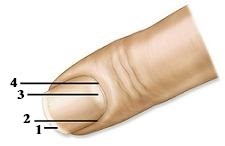Oxygen starved tissues can release chemical signals into the blood that can change the diameter of nearby blood vessels delivering oxygen and nutrients to the tissues
In doing so the blood vessels will respond through vasodilation (widening of the vessel). Which muscle type is responsible for this vasodilation?
A) skeletal muscle
B) striated muscle
C) smooth muscle
D) cardiac muscle
C
You might also like to view...
Which of the following is NOT an effect of aging on the immune system?
a) Increased susceptibility to infections b) Increased susceptibility to malignancies c) Decreased response to vaccines d) Increased response of T cells to antigens e) Decreased production of antibodies
The greatest amount of carbon dioxide transported in the blood is in the form of
dissolved carbon dioxide. Indicate whether the statement is true or false
A television network only telecasts shows that specifically carry sensationalized stories on the lives of the rich and famous and their sexual exploits. This is an example of:
A. social learning. B. agenda-setting. C. brain-washing. D. cultivation.
 Which number indicates the lunula?
Which number indicates the lunula?
A. 1 B. 2 C. 3 D. 4 E. 5